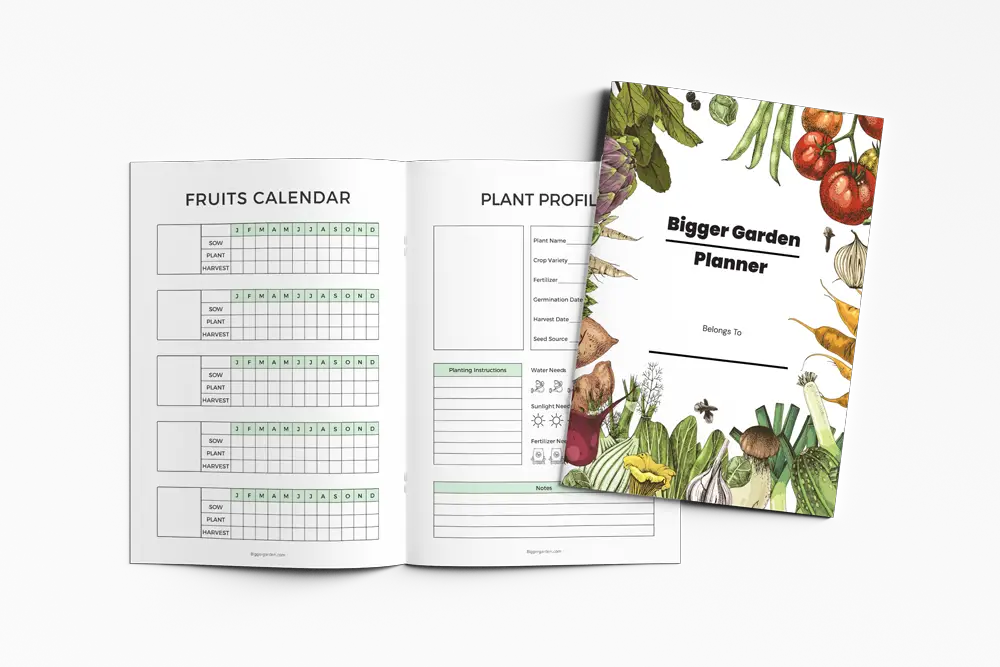7 Zealous Flowers That Start with Z + Growing Guide Charts

This post follows our research editorial guidelines.

Some zoom up, others prefer to catch their zs, but the z flowers are just as zany and zesty as any other. They call zooming bees to buzz by, butterflies that dance on zephyrs as they feed, and hummingbirds get zealous over their sweet nectar.
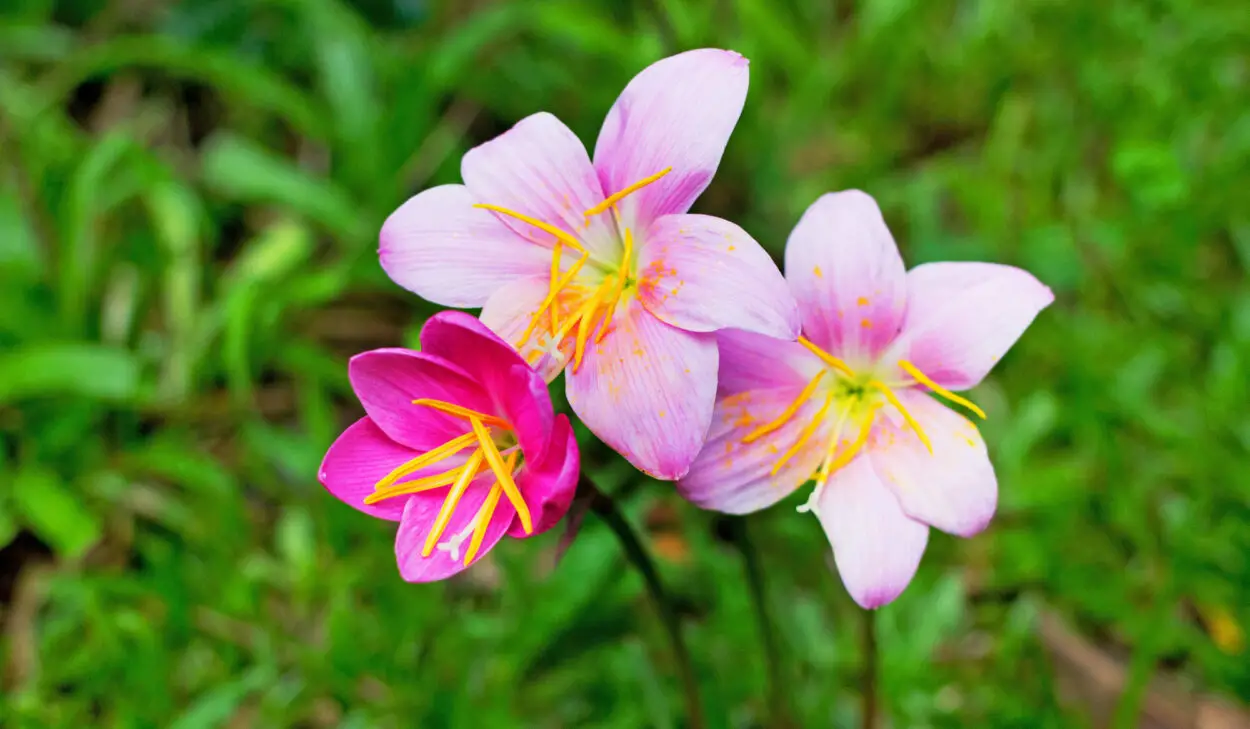
You don’t need to be the most zealous of gardeners to grow a zen garden’s worth of blooms through the season. Zillions of them are easy to grow, a poetic experience for all to behold.
I’m zapping along a zine’s worth of flowers, zigging along in alphabetical order. We’ve zagged down to ‘Z’!
Quickly Find Flowers That Start With Z
1. Zinnia (Zinnia elegans)

The frothy, multilayered flowers of the zinna have always perked up bouquets and cut flower displays, but they provide much more long-lasting charm grown in the garden. Each flower is a tufted disc in radiant shades of pink, red yellow and white, just attractive to visiting insects and birds as it is to the humble gardener.
The zinna is also so widely grown that its fans have created dozens of different hybrids in every color and configuration you can imagine. They’re a fantastic choice for young gardeners, as even young children can muster the scattering of seed and the subsequent relaxed watering schedule they require, and they’ll delight in the arrival of its fast-growing flowers.
| Botanical Name: | Zinnia elegans |
| Growth Rate: | Fast |
| Native Range: | Mexico |
| Hardiness Zones: | 2a to 11b |
| Soil Needs: | Organically rich loamy soils |
| Exposure: | Full sun |
| Blooming Period: | Summer to fall |
2. Zantedeschia (Zantedeschia spp.)
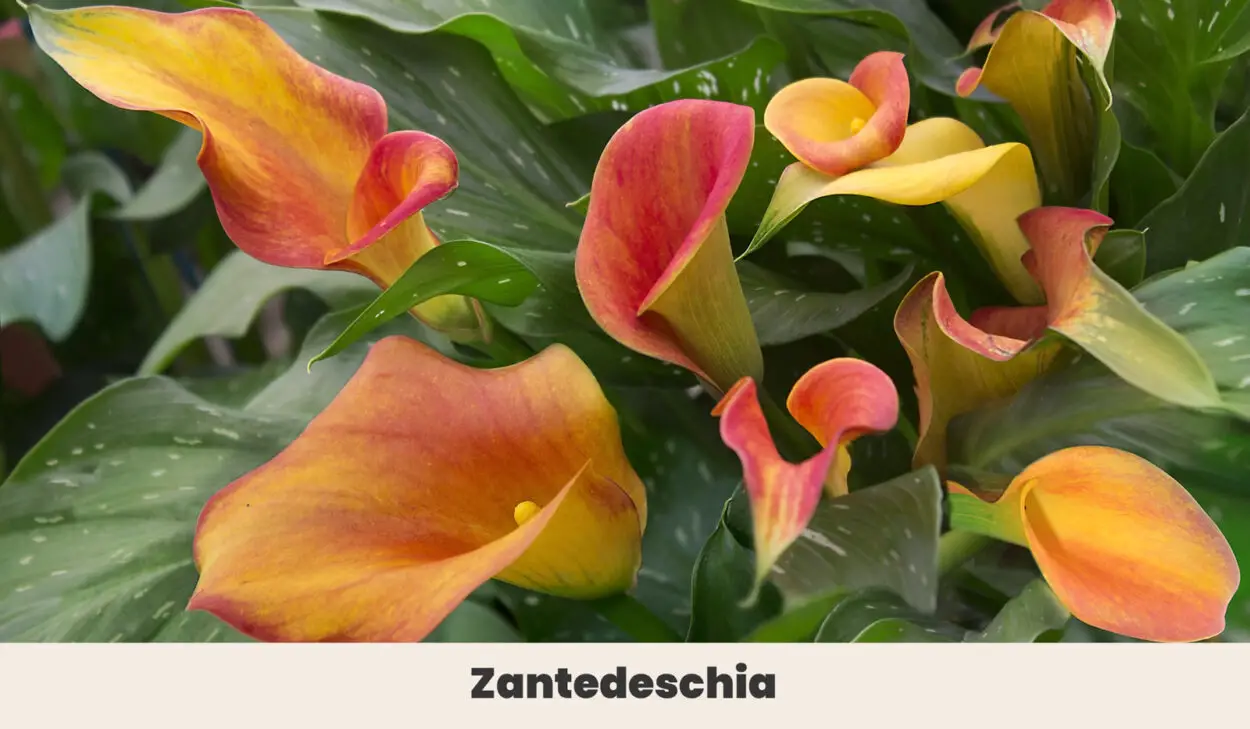
Also known as the calla lily, this is a small, exclusive family of around eight plants. Each has an elegant sheath blossom, a single sleek spadix wrapped around the inflorescence itself. They’re generally pale, funereal flowers in shades of ghostly white, pink, and gold. In popular culture, they’re the bloom placed atop a casket, but they are equally refined when grown in the garden.
Despite their refined appearance, zantedeschias actually quite hardy, and will do well in a wide variety of conditions. They’re drought resistant once established and do quite well in low-fertility soils. Over time they can spread to form jaw-dropping mass displays of emerald green punctuated with bright blooms.
| Botanical Name: | Zantedeschia spp. |
| Growth Rate: | Fast |
| Native Range: | South Africa |
| Hardiness Zones: | 8 to 10 |
| Soil Needs: | Moist soils of most types |
| Exposure: | Full sun to partial shade |
| Blooming Period: | Late spring to summer |
3. Zephyranthes ‘Aquarius’
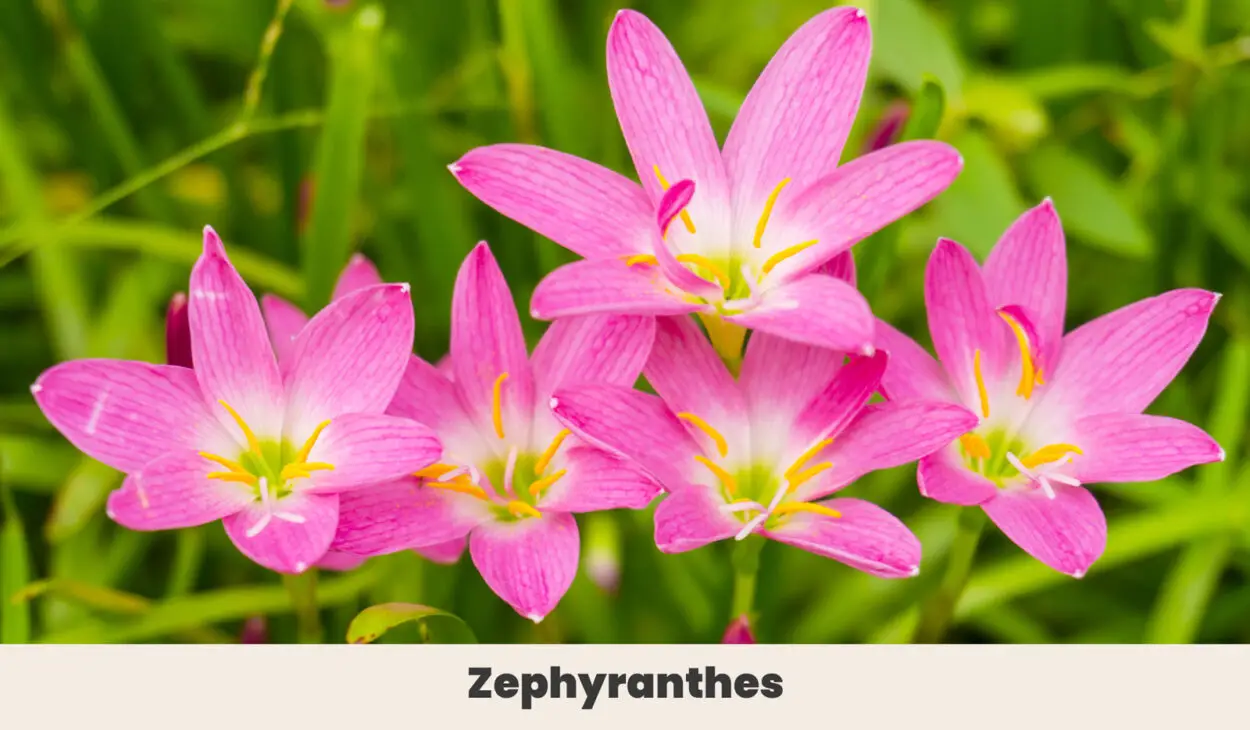
More commonly called the rain lily, these charming bulbs break forth from the soil after soft summer rains. The Aquarius hybrid is particularly hardy and reliable, a bright pink and white star-shaped flower with a delicate golden heart.
They’re sweet when grown on their own, but the most endearing trait of the Aquarius is the rate at which they propagate. It quickly establishes a group of friends, with many bright flowers making an appearance each season. Container-grown specimens don’t take long to fill out their pot, spilling over in vibrant displays of verdant leaves and bright blooms.
| Botanical Name: | Zephyranthes ‘Aquarius’ |
| Growth Rate: | Fast |
| Native Range: | Man-made hybrid |
| Hardiness Zones: | 7 to 11 |
| Soil Needs: | Moist soils of most types |
| Exposure: | Full sun |
| Blooming Period: | Summer to fall |
4. Zabel’s Cherry Laurel (Prunus laurocerasus)
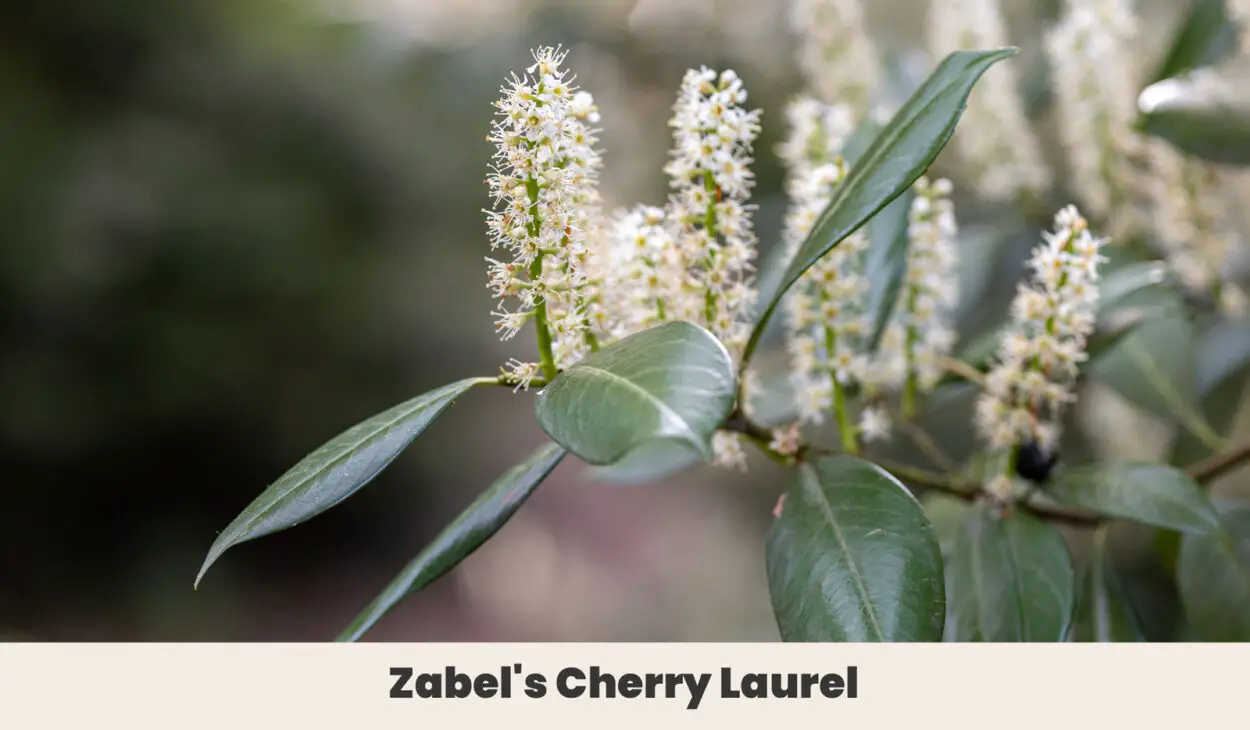
The powerful scent of Zabel’s cherry laurel oozes in thick waves from its blowsy clusters of pale flowers. So abundant is the perfume that some consider it too overwhelming and will only plant this tough shrub away from buildings.
It’s a hardy evergreen, capable of toughing it out in all types of soils, deep shade or full sun, poor fertility, and even areas of high pollution. As a result, it’s a solid choice for hedges and screening, they laugh in the face of heavy pruning, only growing more dense as they regrow.
| Botanical Name: | Prunus laurocerasus |
| Growth Rate: | Fast |
| Native Range: | Europe |
| Hardiness Zones: | 6a to 8b |
| Soil Needs: | Well-draining soils of all types |
| Exposure: | Full sun to deep shade |
| Blooming Period: | Spring |
5. Zenobia Pulverulenta

Zenobia is a sweet, compact shrub speckled with clusters of darling bell-shaped flowers. They range from white to tan and earn the plant its common name of ‘honeycup’. All manner of useful insects is drawn by its sweet fragrance, including native bees and butterflies.
It’s an American native and can be found in low-lying areas like bogs or ponds, where it thrives in damp, swampy conditions. It’s an excellent choice for poorly drained areas of the garden, especially beside water features. They’ll thrive no matter how wet their feet become.
| Botanical Name: | Zenobia pulverulenta |
| Growth Rate: | Moderate |
| Native Range: | Southeastern United states |
| Hardiness Zones: | 6a to 9b |
| Soil Needs: | Moist to boggy loamy or sandy soil. |
| Exposure: | Full sun to partial shade |
| Blooming Period: | Late spring to early summer |
6. Zebra plant (Aphelandra squarrosa)

I love a good leaf, and the zebra plant’s foliage and flowers are dazzling. The flowers are bright gold, almost tessellated one inside the other into towering spires that rise from the heart of the plant’s foliage. The leaves themselves are striped and frame the blooms wonderfully, bright green and dazzling yellow and cream.
It’s a tropical rainforest specialist and is best grown indoors, where it can be enjoyed year-round. In order to see flowers when grown as a houseplant, it needs a lot of strong light and consistently warm temperatures. Some enthusiasts even provide the zebra plant with a humidifier too, in order to most closely approximate its jungle home.
| Botanical Name: | Aphelandra squarrosa |
| Growth Rate: | Slow |
| Native Range: | Brazil |
| Hardiness Zones: | 11a to 12b |
| Soil Needs: | Organic rich, moist soil |
| Exposure: | Bright, indirect light |
| Blooming Period: | Year round when grown indoors |
7. Zygopetalum (Zygopetalum spp.)

Orchid enthusiasts know the broad group of Zygopetalum orchids are some of the most captivating and fragrant orchids available today. They’re a diverse group of epiphytes, evolved to grow on trees and so well suited to indoor cultivation. Their flowers are dappled and extravagant, with long lower lobes and rippling upper leaves.
It seems every month brings a new hybrid to the club, with heady perfume and ever-more elaborate flowers. Despite this, they make an excellent beginner orchid, just as happy in a well-lit, warm bathroom as they are on a competition floor. Be sure to let them dry between watering – while they love to be kept moist their stretching roots need breathing room to thrive.
| Botanical Name: | Zygopetalum spp. |
| Growth Rate: | Slow |
| Native Range: | Southern Brazil |
| Hardiness Zones: | 12 |
| Soil Needs: | Dry well-draining soil that is meant for orchids |
| Exposure: | Bright, indirect light. Partial shade if grown outdoors |
| Blooming Period: | Spring to fall |
Final thoughts
Every zone in your yard has zesty properties that get flowering plants zipping up. There’s zero drama getting the zaniest to take root, zooming up over their season. Zillions of zoological visitors like birds and insects zealously zigzag from bloom to bloom, inspiring feelings of zen and delight.
